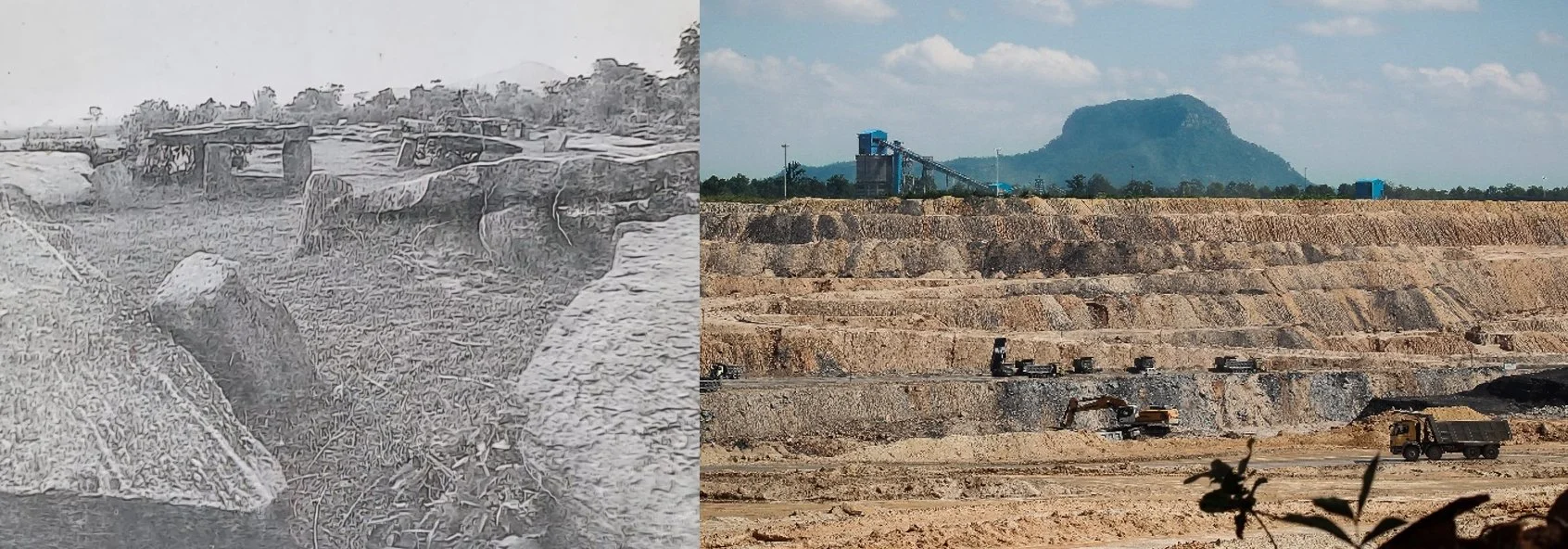Left panel: The oldest and biggest Munda sasandiri, Chokahatu Village, Ranchi District, Jharkhand; Right panel: A mining area in the eco-sensitive forest area of Hasdeo, Chhattisgarh. Image Credits: R. Katyayan, ECCHR.
Speakers:
Dayamani Barla, Social Activist, Journalist and Convenor, Adivasi–Moolvasi Astitva Raksha Manch, Jharkhand, India
CR Bijoy, engaged in issues of resource conflict and governance, India
Sasandiriko Horonkokoa Patta
(‘the burial stone is our title deed’, Mundari saying)
In the first four sessions of the series ‘Deadline or Death Sentence: State Violence and Indigenous (Adivasi) People’s Resistance in India’, we focused on state militarisation and counter-insurgency operations as tools to displace and dispossess Adivasis from their ancestral resource-rich lands. We also looked at the neoliberal shift in national economic and development policies more broadly that have heightened the exploitation and oppression of not just Adivasis but also peasants, farmers and labourers more generally.
This session focuses on recent changes in land and forest governance legal regimes at both national and local levels. The state claims these changes are necessary for ease-of-doing-business in resource rich areas, but which sabotage the long Adivasi tradition of sustainable governing of agrarian and forest land and resources (“jal, jangal, jameen”), much of it as common lands. Therefore, as our speakers will discuss, in reality, these changes are legalising accumulation by dispossession in the Adivasi and forest areas through simultaneous lawfare and techno-managerial bureaucratic apparatus that operates in plain sight.
In the first part, Dayamani Barla helps us make sense of how land governance by the state has become reduced to bureaucratic land administration in service of neoliberal capitalism. Dayamani also speaks on how this has been enabled by the digitalisation of land records in the name of modernisation, the land bank policy, and the SVAMITVA* scheme that aims to bring in “conclusive titling” of residential rural residential properties.
In the second part, CR Bijoy help us unpack the grand designs of “lawfare” in national laws that affect Adivasi land rights, their autonomy, and right to self-determination. For example, the politics behind the piecemeal amendments in mining, environment, forest and wildlife conservation, and biodiversity laws; and the politics of forest administration and conservation elites that systematically sabotage the Forest Rights Act 2006.
Our speakers also take us through how these phenomena are being resisted by the affected communities.
*SVAMITVA: Surveying of Villages Abadi and Mapping with Improvised Technology in Village Areas
'Save the Khatiyan, Save the Land’: How Land Records Digitization is Erasing Adivasi Land Systems in Jharkhand, October 2024
खतियान बचाओ, ज़मीन बचाओ': झारखण्ड में भूमि अभिलेखों को डिजिटल कर देने से आदिवासी काश्तकारी व्यवस्था ख़त्म होगी, October 2024
Why drones are surveying Indian villages, Vaishnavi Rathore & Nolina Minj, Scroll.in, February 2025
Adivasis of Jharkhand — landless in their own land, Jacinta Kerketta, People's Archive of Rural India, November 2024

